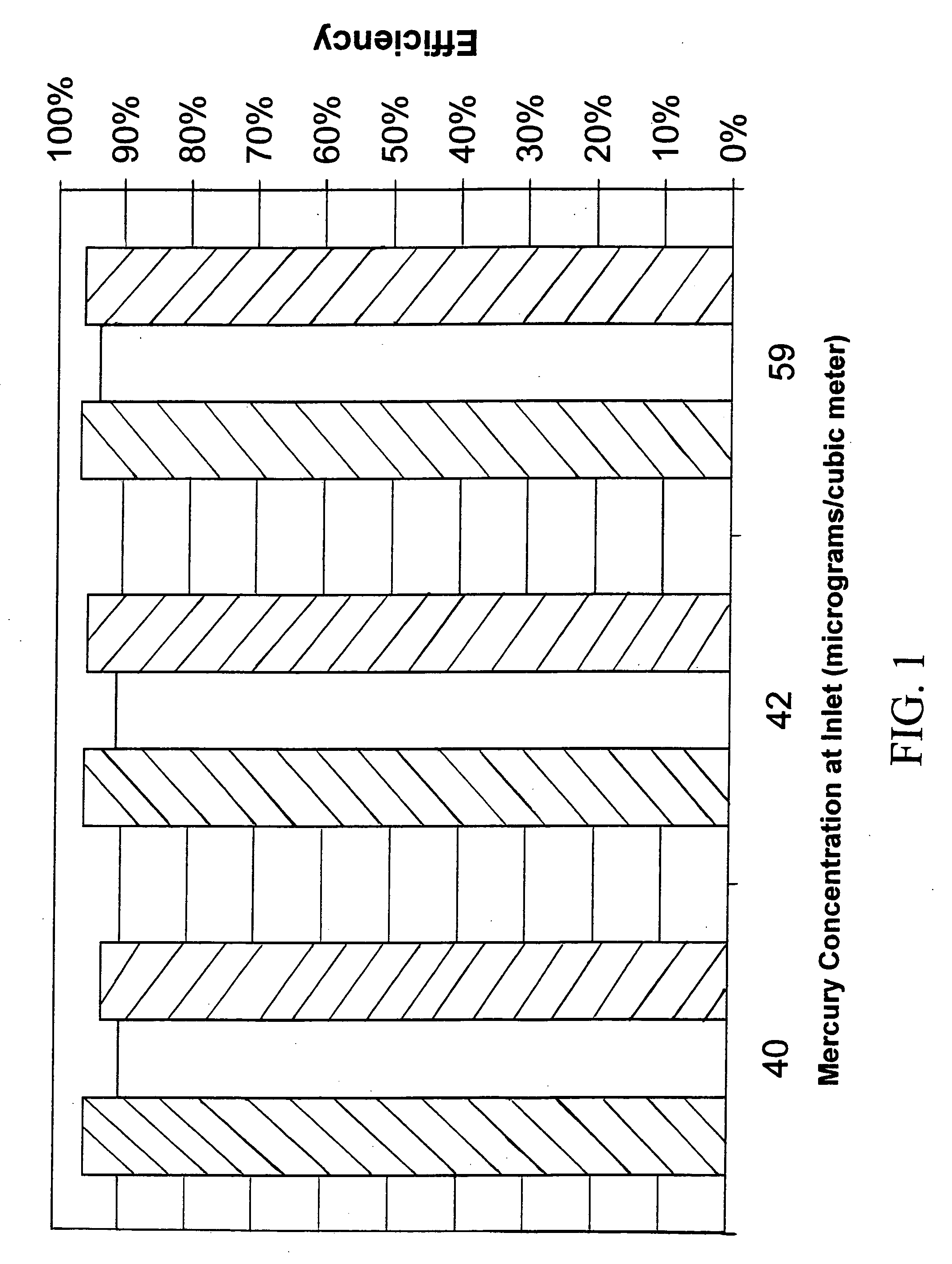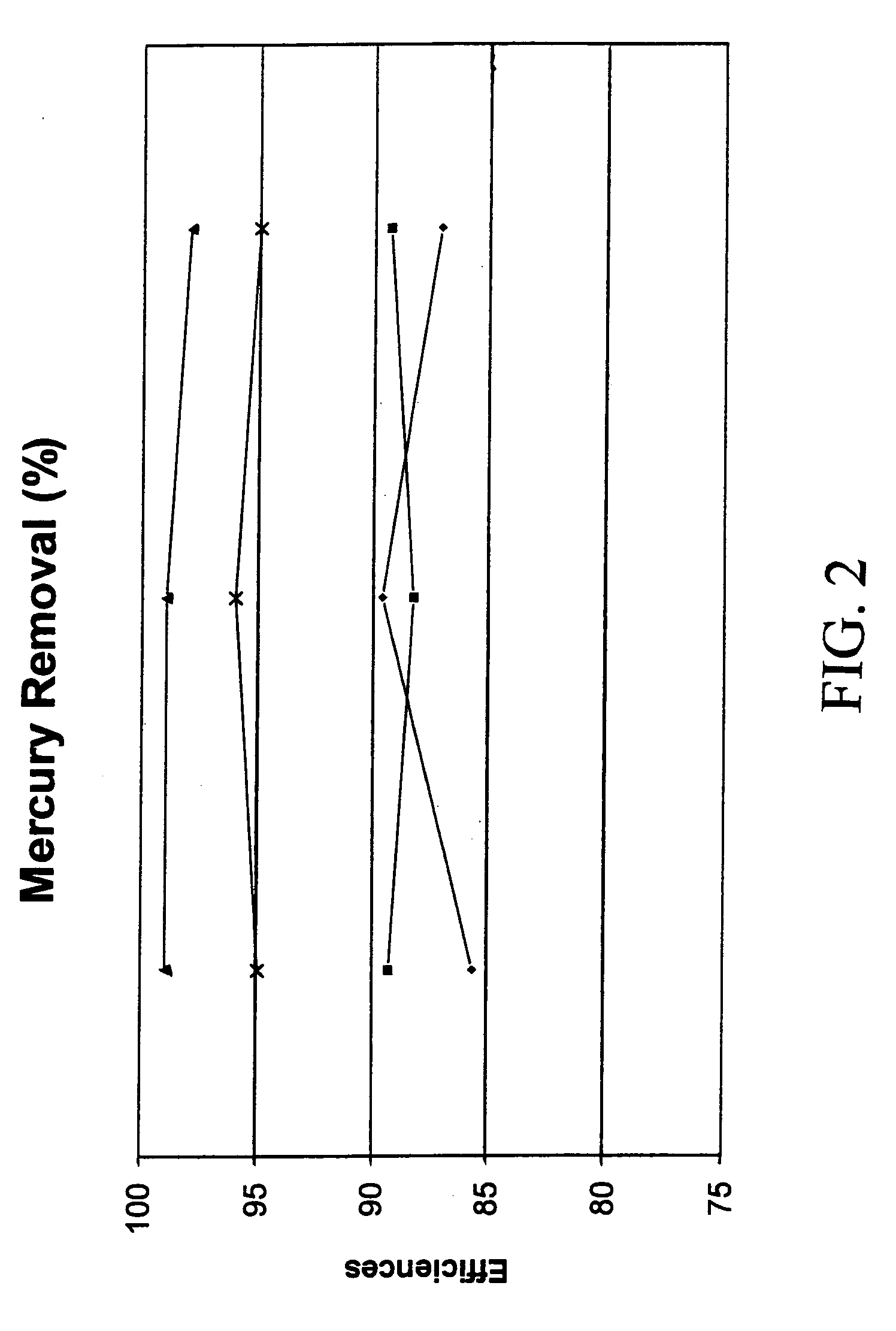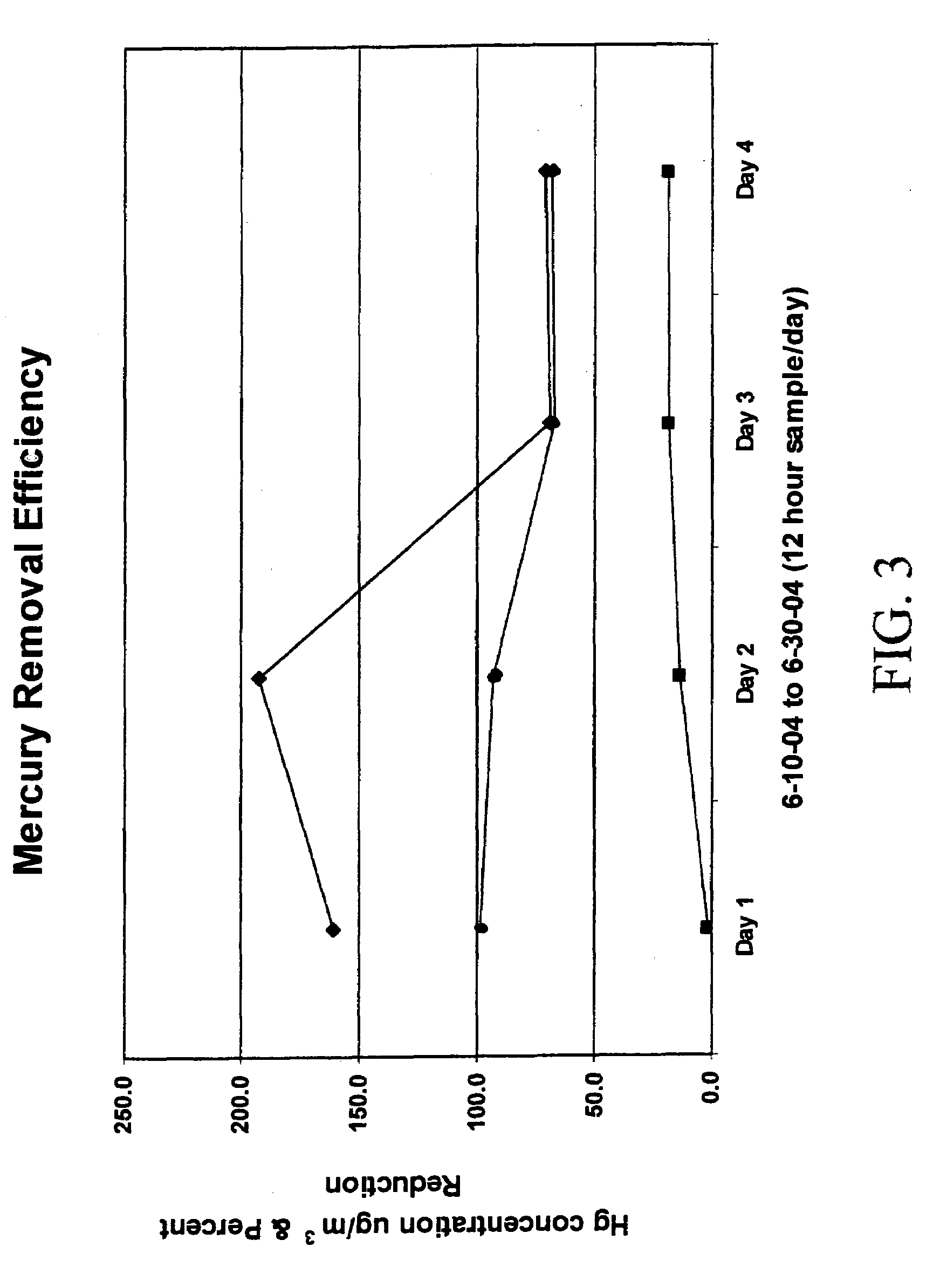Apparatus and method for removing mercury vapor from a gas stream
- Summary
- Abstract
- Description
- Claims
- Application Information
AI Technical Summary
Benefits of technology
Problems solved by technology
Method used
Image
Examples
Example
Example 1
Removal of Mercury Vapor from a Gas Stream with Metallic Disks and Threads
[0019]Four gold filters were made of thin solid gold plate 2.5 centimeters in diameter. Pinholes of less than one millimeter diameter were made through the plates. In addition, gold threads of less than one millimeter diameter were made in 30 centimeter lengths. The threads were bundled to create the filter. These filters and threads were also made in silver. Since silver is less expensive silver filters were tested in parallel with gold filters to evaluate their effectiveness in removing mercury. Initial tests were performed at room temperature.
[0020]Filter efficiency testing was done using a mercury vapor analyzer, mercury tracker, which measures mercury to a low level of 0.1 μg / m3. This portable mercury analyzer measures mercury in the inlet and outlet of the gas stream of the filter from which the efficiency of the filter is determined (FIG. 2).
[0021]TABLE 1Silver Wire at 5 (liters per minute) lpm...
Example
Example 2
Removal of Mercury Vapor from a Gas Stream with Silver Plated Beads
[0026]Commercially available silver plated beads (approximately 3 mm in diameter) were tested for their efficiency of removing mercury from a gas stream at 5 lpm (FIG. 1).
[0027]TABLE 6Silver Plated Beads at 56 C.°InletOutlet% Removal53.832.39642.82.19541393
[0028]TABLE 7Silver Beads at 73 degrees C.°InletOutlet% Removal44.32.993393.69136.19090
Example
Example 3
Removal of Mercury Vapor from a Gas Stream with a Gold Plated Sponge
[0029]Copper sponges were coated with gold using an electro-deposition process. Copper sponges were immersed in a gold cyanide solution and a DC current was passed through the solution. Gold ions migrate toward the copper sponge and are deposited on the sponge's surface. The thickness of the gold plating is controlled by the amount of time the electro-deposition process is continued. It was found that a gold plate thickness of six micrometers works well for the filters in the subject method. As is apparent to those skilled in the art, gold plating thickness and the amount of surface area to be plated determine the amount of gold cyanide solution required for proper plating.
[0030]The filters were packed into a 2.5 cm diameter and 15 cm long plastic tube and were about 18 g with about 50 cm2 per gram of surface area. Therefore, there was about 950 cm2 total surface area available for mercury removal. A flow r...
PUM
| Property | Measurement | Unit |
|---|---|---|
| Fraction | aaaaa | aaaaa |
| Fraction | aaaaa | aaaaa |
| Thickness | aaaaa | aaaaa |
Abstract
Description
Claims
Application Information
 Login to view more
Login to view more - R&D Engineer
- R&D Manager
- IP Professional
- Industry Leading Data Capabilities
- Powerful AI technology
- Patent DNA Extraction
Browse by: Latest US Patents, China's latest patents, Technical Efficacy Thesaurus, Application Domain, Technology Topic.
© 2024 PatSnap. All rights reserved.Legal|Privacy policy|Modern Slavery Act Transparency Statement|Sitemap



